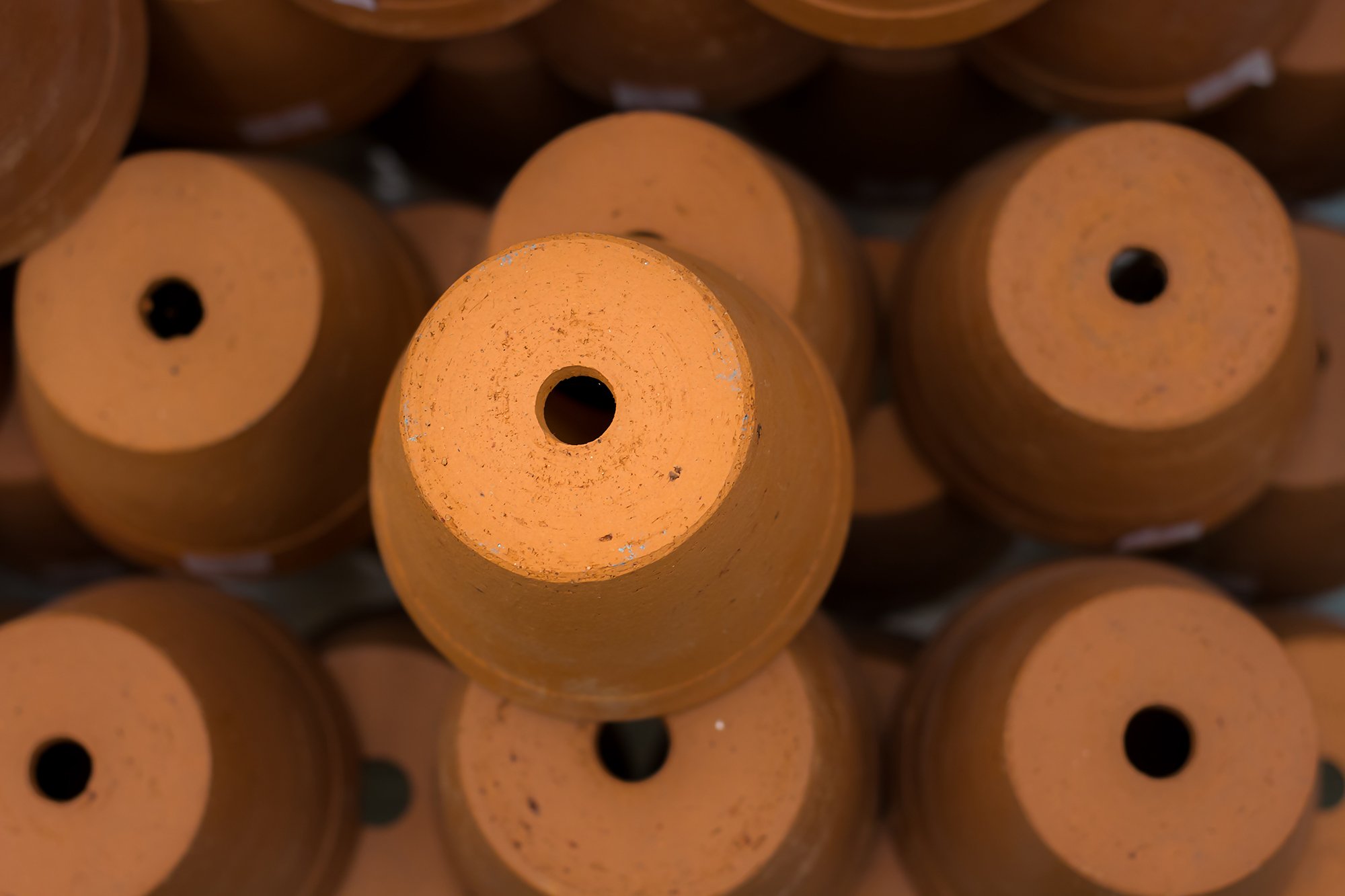5 Tips for Finding the Perfect Planter
Plant pots are not only stylish but they are practical. When shopping for a planter for your new plant, make sure you aren’t just looking for something cute. Use this simple checklist to help make sure your plant has a home where it can thrive! We’ve also included easy solutions to make containers and vessels plant-friendly.
Does my pot need a drainage hole?
Whether your plant is a thirsty tropical or a desert succulent, your plant will grow bigger and stronger with a drainage hole at the base. It’s always safer to side with a drainage hole, that way water does not accumulate at the base and create mold in your soil or form root rot. Some cacti, succulents, and air plants can live happily in a glass terrarium with no drainage hole, just make sure you are not overwatering your plants. If you choose not to use a drainage hole, it’s best to add pebbles or rocks to the base. This will help trap excess water away from the soil and roots. Don’t worry if you already bought the perfect planter and it doesn’t have a drainage hole. You can easily repurpose your plant pot without any stress, by simply adding a hole. If your pot is ceramic, find a ceramic drill bit at your local hardware store and add a few holes to the bottom of your container.
Where can I find plant pots?
There are many places you can find perfect homes for your plant, no matter your budget. If you want to ensure success, your first stop should be your local plant nursery. They will have a large selection of pots, and their plant experts will be able to answer any of your questions. Nurseries will likely be the more expensive option, but they will have a beautifully curated collection. If you’re on a budget, try going to your local thrift shop. People are constantly cycling through pots when their plants outgrow their original containers, so there are often many pots in great shape at your local second-hand store. You can also upcycle items found around the house to turn them into pots. Old mugs, jars, and buckets make great pots! Lastly, try your local dollar store for other great alternatives as well.
What material?
There are many types of pots out there. From your classic terracotta pot to a chic glass vessel. Not every plant is suitable for every type of pot. Concrete, terracotta, and ceramic pots are the most breathable pots and they will dry quickly. If you’re a new plant owner, ceramic pots will be the most forgiving, reliable, and versatile. Plastic pots are more economical and can handle strong weather. These are great for outdoor container gardens. Wood pots also work well for planters and dry fast. However, wood planters will rot quicker than any other material. Metal and glass planters are trendy alternatives best kept for succulents and indoor low-patience plants.
How big?
Plants are measured by their diameter. From 2” pots for seedlings to 30” or more for trees, there’s something for every plant type. Vegetable and fruit plants should start with 10” pots. It’s best to have bigger pots outdoors so they can better endure the weather and it’ll help you avoid repotting multiple times throughout the season. When shopping for indoor plants, the best way to determine pot size is to make sure it looks proportional and then consider adding a little room for growth, especially if you are potting with spring on the horizon. While that may sound too simple, it’s the easiest way to start! If things are going well, your plant is going to grow. If you find your plant is growing slowly, you might need to reconsider its pot size and move it to a bigger planter. Don’t be afraid to repot your plant if needed, this will help your plant grow even bigger and stronger when it has more room to spread its roots. An empty pot is a great excuse for a new plant!
What shape?
Tall or short? Round or square? Most plants need a good tall to wide ratio. Succulents can get away with shallow planters because their roots stay closer to the surface. Rectangular planters work great for herb gardens, especially if you're hoping to keep yours indoors or on a window sill. You can even plant multiple herbs in one planter! The best way to find out, is to do some research on how the roots of your plants grow, and then find a planter to accommodate.
There is a lot more that goes into caring for a plant than just its pot. Make sure your plant has healthy soil and nutrients. A tablespoon of GROW for every 10-inch pot will help your plants grow big and strong. With a great plant pot and a dose of GROW, you’ll be set up for success!






